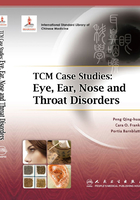
上QQ阅读APP看书,第一时间看更新
Part I Diseases of the Eyes
Chapter 1 Hordeolum
A hordeolum or stye is an acute infection of the sebaceous glands of the eyelid, usually caused by a localized infection of the eyelash follicle and adjacent meimobian glands. It is sometimes associated with blepharitis. Most hordeola are external, and diagnosis is made visually through clinical examination.
Hordeola are characterized by grain-shaped boils appearing on the margin of the eyelid that can easily form pus and rupture. Symptoms include redness, swelling itchiness and pain of the lid margin. Mild hardness and tenderness are followed by localized swelling with increased pain. Vision may be blurred. In some cases the abscess may rupture spontaneously. The condition is seen more frequently in adults than children and most cases are self-limiting, usually resolving within two weeks.
As the hordeolum progresses, there will be a gradual reduction of redness and swelling with the induration softening into pus. Pus formation in an external hordeolum occurs on the surface of the eyelid. The pus in the internal hordeolum forms at the inner part of the eyelid, often with a rupturing of the lesion. Lesions located close to the inner canthus will be more painful. The sclera on the diseased side will turn red with the swelling embedded in the palpebral fssure. There may also be palpable nodules anterior to the ears.
Western medical treatment consists of hot compresses applied to the eye, along with improvements in eye hygiene. Surgical incision and drainage may be used if the hordeolum is large. If hordeola present with local cellulitis, antibiotics will be prescribed.
In TCM, this disease is referred to as zhēn yăn (needle eye, 针眼), also known as tŭ gān (土疳), or tŭ yáng (土疡). It usually results from wind-heat evil attacking the eyelid, an improper diet, or heat accumulation in the spleen and stomach rising upward to attack the eyelid. Recurrence is usually due to lingering pathogens not being completely resolved, or retention of wind-heat due to deficiency of spleen qi and wei-defense qi. Causative factors include poor eye hygiene, malnutrition, fatigue, or wasting and thirsting paterns.